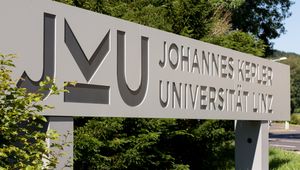A JKU study has shown that spending more time with AMS advisors results in finding a job faster.

The Public Employment Service Austria (AMS) provides assistance, support services, and job placement services for those who are unemployed. Just how successfully someone can be helped to become employed again also depends on how many job seekers an AMS advisor has to assist. The evaluation for a pilot project is suggesting that a more intensive level of support can shorten the duration of unemployment, speed up the process to find a new job, and save money in the process.
In 2015 (2019), the AMS found jobs for an average of approximately 5,230 (5,500) individuals (full-time), serving over 1 million (960,000) individuals and over 68,000 (76,000) companies (AMS, 2015; AMS, 2019). Approximately 11,300 job referrals were issued each working day in 2015 for approximately four million job interviews, and around three-quarters of all job openings (excluding apprenticeships) were filled within a one-month period.
In 2015 and in 2016, the AMS piloted an experimental project to explore the impact of more attentive counseling services. The number of employees was increased at one regional office in Linz and at one office in Vienna to support a randomly selected group of job seekers; the ratio of support for all other job seekers did not change. At the start of the project in Vienna, one person in one group provided support services for approximately 100 unemployed individuals. In the comparison group (in which the staffing level remained unchanged), one person provided support services for approximately 250 unemployed individuals. The advisors who provided services to the smaller group therefore had more time to assist the job seekers.
An evaluation by JKU labor market economist, René Böheim, along with Helmut Mahringer and Rainer Eppel (both WIFO), has shown that improving the support ratio has initially resulted in more extensive counseling services and job placement activities, thereby positively impacting the job seekers’ employment opportunities. The advisors had more time to spend with individual job seekers, resulting in more frequent contact, more job offers, more allocation to support different measures, but also more frequent suspension of receiving benefit if the individual did not keep interview appointments or rejected job offers. In comparing the labor market situation two years after the project began, the group with better support services was registered as unemployed for an average of two months less than those in the group with the unchanged support service ratio. The shorter unemployment period was partly due to the fact that the unemployed individuals who had more support were able to find a job more quickly. In addition, the unemployment rate impacted the number of those who gave up unemployment benefits without having found a job, meaning they remained without gainful employment and did not receive any benefits to secure their livelihood, such as unemployment benefits or unemployment assistance.
In theory, a higher level of support could result in some individuals accepting less attractive jobs in order to avoid having to check in with the advisor often and being subject to a certain extent of “control” that comes with the process. This could potentially result in a higher degree of more unstable employment, or comparatively low pay, because employees and employers are not as well matched. On the other hand, more coordinated placement could result in more stable, higher-paying employment if the labor force was more closely matched to the job opening. However, the greater intensity of outreach actually had no impact on either entry-level wages or job length. This indicates that while the more closely supervised group found a job more quickly, the nature of employment did not change substantially.
A comparison of the costs to provide a higher level of support services and the revenues for the public sector has shown that increasing the number of employees not only helped many jobseekers find employment more quickly, but it is also more cost-efficient. The higher staffing costs are outweighed by the fact that shorter unemployment periods result in fewer subsistence benefits and finding a job faster boosts revenue from taxes and social security contributions. In this case, this is an investment that can actually save the state money.
About René Böheim
René Böheim is an economist at the Department of Economics at the Johannes Kepler University Linz and a research consultant at the Vienna Economic Research Institute. His research focuses on empirical labor market research, particularly evaluating labor market policies.










